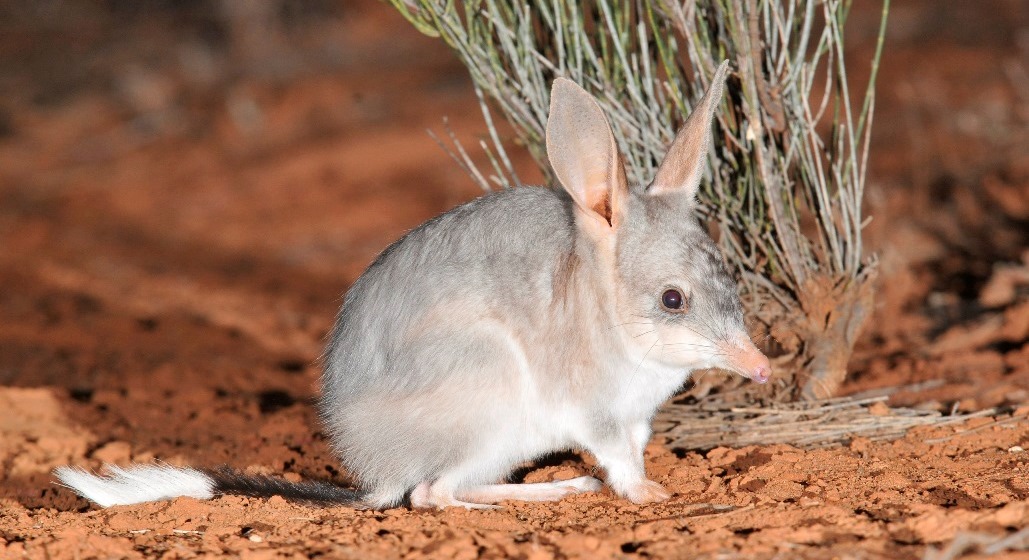Once widespread across semi-arid and arid Australia (occupying around 70% of the continent), the Greater Bilby has disappeared from over 80% of its former range, primarily as a result of feral domestic cats and foxes introduced by European settlers.
The species currently occurs as patchily distributed populations throughout the Tanami in the Northern Territories (NT), west to Broome and south to Warburton in Western Australia (WA), with isolated populations north of Birdsville in south-western Queensland and north-east of Alice Springs, NT.
The species is continuing to decline and is now confined to the driest and least fertile parts of its former distribution.
But now, on April 1, 2018, Environment Minister Gabrielle Upton has announced that—for the first time in over a century—the Greater Bilby will be returning to New South Wales (NSW) National Parks by the end of 2018.
The NSW Government is working with the Australian Wildlife Conservancy (AWC) to reintroduce Bilbies into the magnificent Pilliga forests of northern NSW. “This is a historic step for Bilby conservation – they became extinct in NSW over 100 years ago and for the first time they will be back in the wild,” Ms. Upton said. “The NSW Government is investing over $40 million through the Saving our Species program to reintroduce native species to NSW. The rewilding project with AWC is part of that significant investment.”
As part of the project, AWC is building a specially designed 32 kilometre feral cat and fox-proof fence to establish a secure 5800 hectare feral predator-free area into which wild Bilbies will be reintroduced. “This new fence is crucial to protecting the Bilbies and the first posts have just gone in,” Ms. Upton said.
Member for Barwon Kevin Humphries welcomed the exciting project milestone. “Over the next two months over 6500 fence pickets, 300 kilometres of plain wire and 96 kilometres of netting will be installed,” Mr. Humphries said. “Then work starts to remove all the feral cats and foxes from across the 5800 hectares of forest – it’s a massive project.”
AWC Chief Executive Atticus Fleming said the scale of the project meant the potential to eventually protect almost 10 per cent of the total Australian Greater Bilby population. “AWC has been engaged to manage a 35,750 hectare area of the Pilliga State Conservation Area and National Park. Establishing the large feral-free area is the best way of securing the return of the Bilby to this area, and to others,” Mr. Fleming explained.
At least five other regionally extinct mammals will be introduced to the Pilliga in coming years – the Bridled Nailtail Wallaby, the Brush-tailed Bettong, the Western Barred Bandicoot, the Plains Mouse and the Western Quoll.
Photo courtesy of Australian Wildlife Conservancy.

